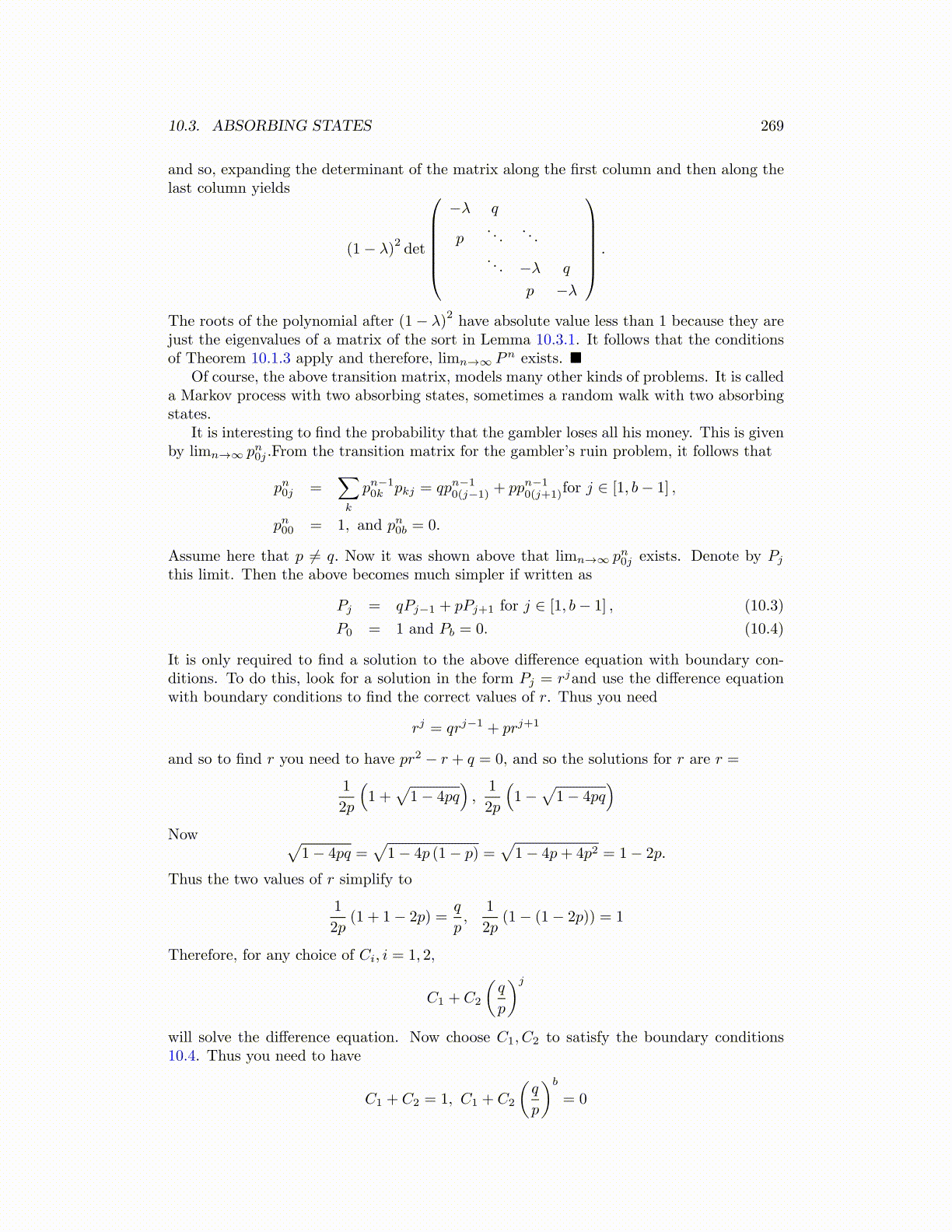
10.3. ABSORBING STATES 269
and so, expanding the determinant of the matrix along the first column and then along thelast column yields
(1− λ)2det
−λ q
p. . .
. . .
. . . −λ q
p −λ
.
The roots of the polynomial after (1− λ)2have absolute value less than 1 because they are
just the eigenvalues of a matrix of the sort in Lemma 10.3.1. It follows that the conditionsof Theorem 10.1.3 apply and therefore, limn→∞ Pn exists. ■
Of course, the above transition matrix, models many other kinds of problems. It is calleda Markov process with two absorbing states, sometimes a random walk with two absorbingstates.
It is interesting to find the probability that the gambler loses all his money. This is givenby limn→∞ pn0j .From the transition matrix for the gambler’s ruin problem, it follows that
pn0j =∑k
pn−10k pkj = qpn−1
0(j−1) + ppn−10(j+1)for j ∈ [1, b− 1] ,
pn00 = 1, and pn0b = 0.
Assume here that p ̸= q. Now it was shown above that limn→∞ pn0j exists. Denote by Pj
this limit. Then the above becomes much simpler if written as
Pj = qPj−1 + pPj+1 for j ∈ [1, b− 1] , (10.3)
P0 = 1 and Pb = 0. (10.4)
It is only required to find a solution to the above difference equation with boundary con-ditions. To do this, look for a solution in the form Pj = rjand use the difference equationwith boundary conditions to find the correct values of r. Thus you need
rj = qrj−1 + prj+1
and so to find r you need to have pr2 − r + q = 0, and so the solutions for r are r =
1
2p
(1 +
√1− 4pq
),
1
2p
(1−
√1− 4pq
)Now √
1− 4pq =√1− 4p (1− p) =
√1− 4p+ 4p2 = 1− 2p.
Thus the two values of r simplify to
1
2p(1 + 1− 2p) =
q
p,
1
2p(1− (1− 2p)) = 1
Therefore, for any choice of Ci, i = 1, 2,
C1 + C2
(q
p
)j
will solve the difference equation. Now choose C1, C2 to satisfy the boundary conditions10.4. Thus you need to have
C1 + C2 = 1, C1 + C2
(q
p
)b
= 0